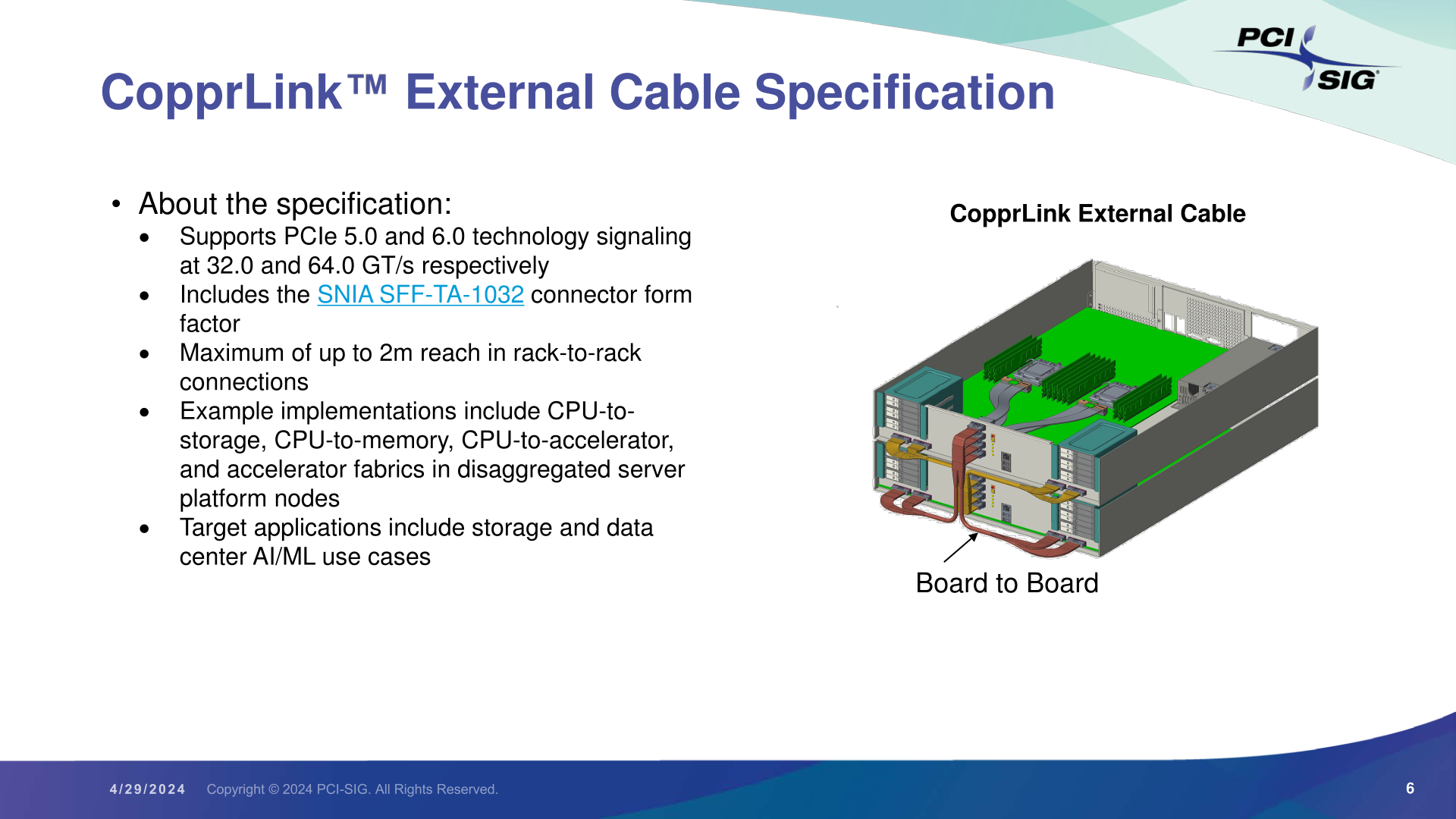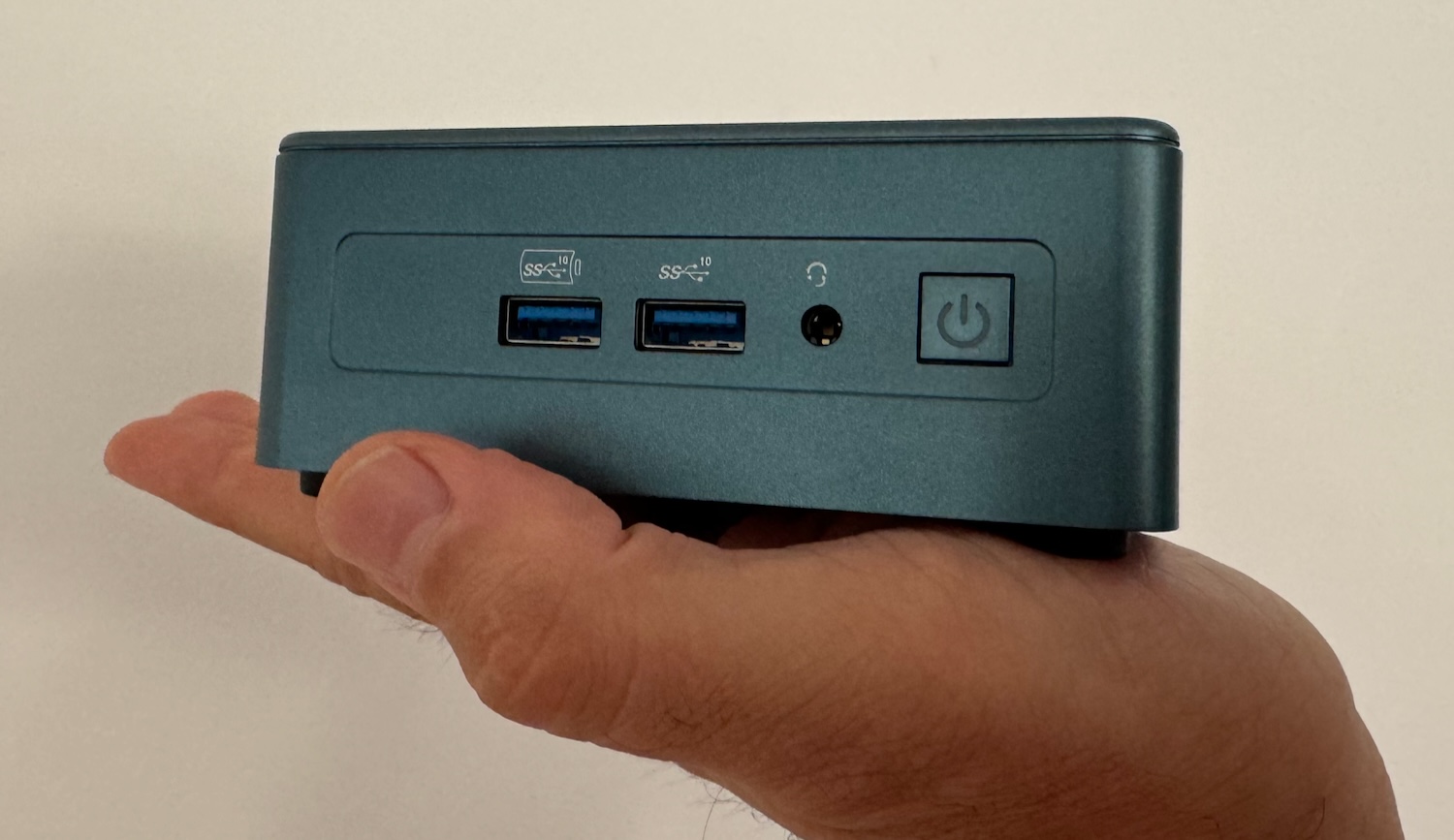Why it matters: The PCI Express standard is undergoing a significant upgrade in cabling, as the newly announced CopprLink specifications aim to maintain the high-speed performance of this ubiquitous interconnect technology over longer copper cables. If you’re involved in building servers, storage arrays, or other data center equipment, prepare for a fresh dose of PCIe cabling options.
The news originates from PCI-SIG, the industry group overseeing the PCI Express standard. Their newly introduced CopprLink specifications cover both internal and external copper cabling, capable of accommodating the 32GT/s and 64GT/s speeds associated with PCIe 5.0 and 6.0.
Internally, CopprLink sets standards for copper cables up to 1 meter in length, facilitating connections within systems such as servers. This includes links between motherboards and add-in cards, chip-to-chip connections, and routing PCIe from the motherboard to a backplane. Essentially, it caters to any scenario requiring high-speed PCIe connections within a device. These internal cables utilize the industry-standard SFF-TA-1016 connector, aiming to standardize the various internal cabling methods currently in use.
Additionally, there’s an external CopprLink cable standard employing the SFF-TA-1032 connector, enabling connections between systems at distances of up to two meters. This standard is also capable of handling the 64GT/s speeds introduced by PCIe 6.0. The external specification offers new design opportunities for shared storage pools, RAM expansions, or accelerator fabrics, allowing systems to be physically separated while maintaining necessary bandwidth.

Interestingly, PCI-SIG foresees significant adoption of CopprLink in AI/machine learning applications for data transfer between distributed systems. However, they expect the storage market to continue using the established PCI Express External Cabling specification for the time being, with an updated version tailored specifically for storage likely on the horizon.
“The CopprLink Cable specifications integrate PCIe cabling seamlessly with the PCIe electrical base specification, providing longer channel reach and topological flexibility,” said Al Yanes, PCI-SIG president and chairperson.
“The CopprLink Cables are intended to evolve with the same connector form factors, scale for future PCIe technology generations, and meet the demands of emerging applications. The Electrical Work Group has already begun pathfinding work on CopprLink Cables for PCIe 7.0 technology at 128.0 GT/s, showcasing PCI-SIG’s commitment to the CopprLink Cable specifications.”
However, copper cabling faces limitations at these extended distances and high bandwidths. Therefore, PCI-SIG is actively developing standards for optical PCIe cabling, although this is still in the early stages.
PCI-SIG is expediting the deployment of CopprLink specifications into real products. They aim to showcase cables and systems at conferences as early as this summer, with vendors expected to introduce CopprLink-enabled equipment before the end of 2024.











